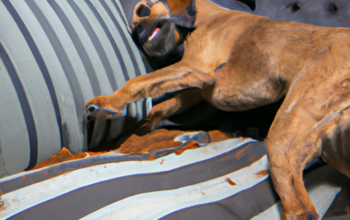As a caregiver, it is essential for you to be aware of the symptoms of rabies in dogs. Rabies is a severe, often fatal, viral polioencephalitis that specifically affects the gray matter of the dog’s brain and its central nervous system. This article will guide you through the warning signs, stages, and prevention measures of this deadly disease.
H2: Understanding Rabies
Rabies is caused by the Rabies virus and primarily spreads through bites from infected animals. It’s one of the oldest and most feared diseases recorded, and it’s present across the globe. But what exactly makes it so dangerous? The virus has a long incubation period that allows it to slowly creep into the nervous system and then to the brain, after which it swiftly progresses to cause death.
H2: Early Symptoms of Rabies in Dogs
In the initial stages, the symptoms of rabies in dogs can be subtle and easily overlooked. They generally appear within 3 to 8 weeks after the bite, but in some cases, it can take months. Here’s what to watch out for:
- Behavioral changes:
- The dog may appear unusually anxious, nervous, or aggressive.
-
There might be a sudden change in temperament.
-
Physical discomfort:
- The dog may have a fever.
- There may be localized weakness or discomfort near the site of the bite.
H2: Advanced Symptoms of Rabies in Dogs
As the disease progresses, the symptoms become more severe and distinct:
- Furious Rabies:
- The dog may exhibit extreme behavioral changes, including aggression and attack behavior.
-
There may be hypersensitivity to light and sound.
-
Paralytic Rabies:
- The dog may experience paralysis and often a dropped jaw due to paralysis of the jaw muscles.
- There may be foaming at the mouth as the dog can’t swallow saliva.
H2: Confirming Rabies in Dogs
Unfortunately, there’s no test to diagnose rabies in live dogs. The most surefire way to diagnose rabies is post-mortem, by examining the brain tissue. However, if you observe the above symptoms and know that your dog may have been bitten by a potentially rabid animal, seek immediate veterinary assistance.
H2: Preventing Rabies in Dogs
| Prevention Measures | Description |
|---|---|
| Rabies vaccination | Vaccination is the single most effective measure. Puppies should be vaccinated at 12–16 weeks of age. |
| Avoid potential exposure | Keep your dog on a leash and supervise them while outdoors to minimize encounters with wild animals. |
| Spay/Neuter your pet | This reduces the chances of them roaming and encountering potentially rabid animals. |
FAQ
Q: Can I catch rabies from my dog?
A: Yes, rabies is a zoonotic disease, meaning it can be transmitted from animals to humans.
Q: Is there a cure for rabies in dogs?
A: Once symptoms appear, Rabies is almost always fatal. Prevention through vaccination is the key.
Q: How long does it take for a dog to show signs of rabies?
A: Symptoms of rabies generally appear between 3 to 8 weeks after the bite, but in some cases, it can take months.
Q: Can a vaccinated dog get rabies?
A: Vaccination significantly reduces the risk, but it’s not 100% foolproof. Always avoid potential exposure to rabies.
Stay vigilant and informed, as your awareness can make a significant difference to the health and life of your furry friend.



